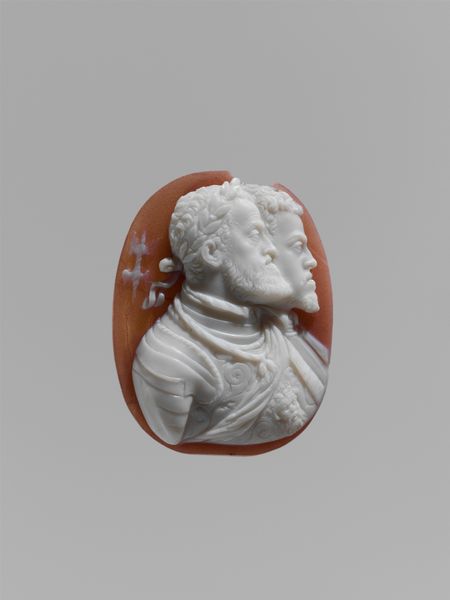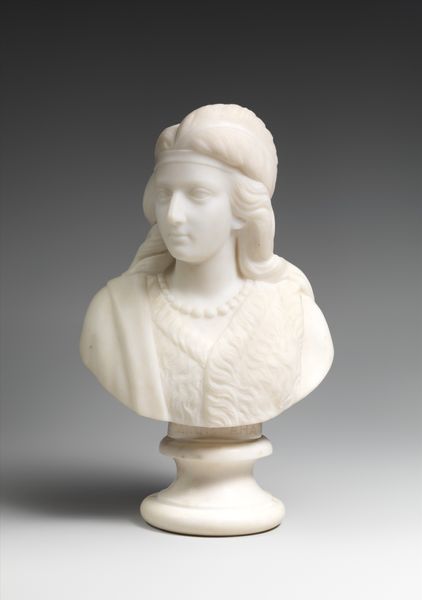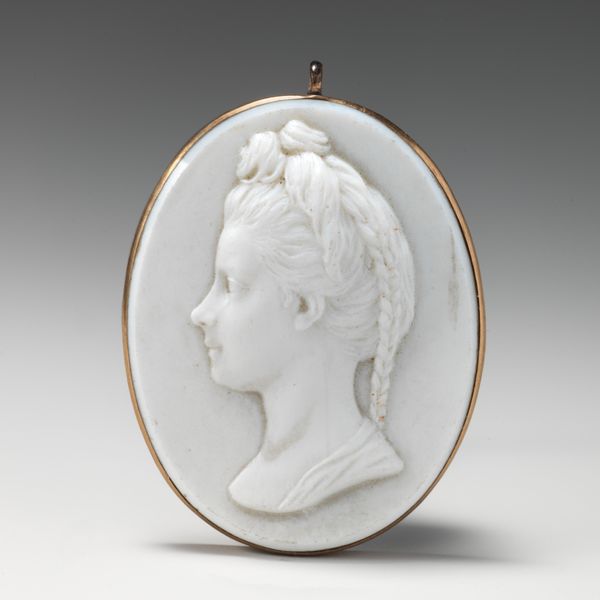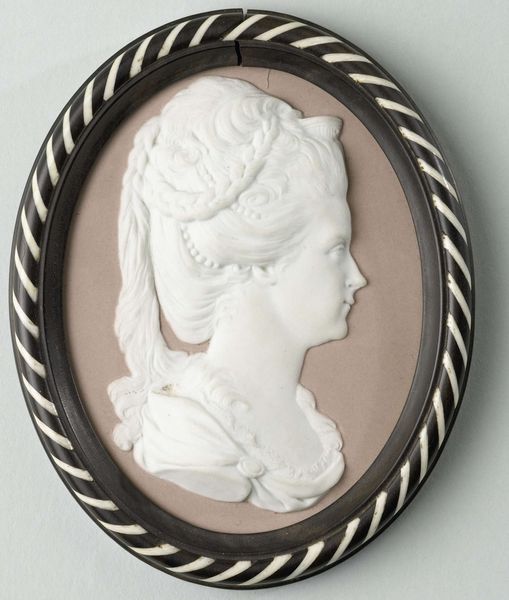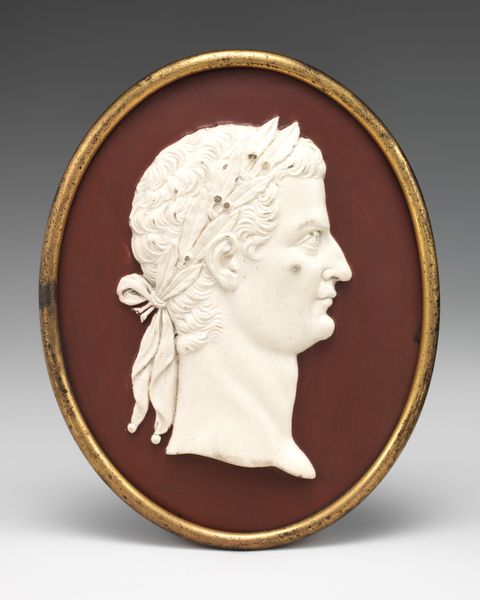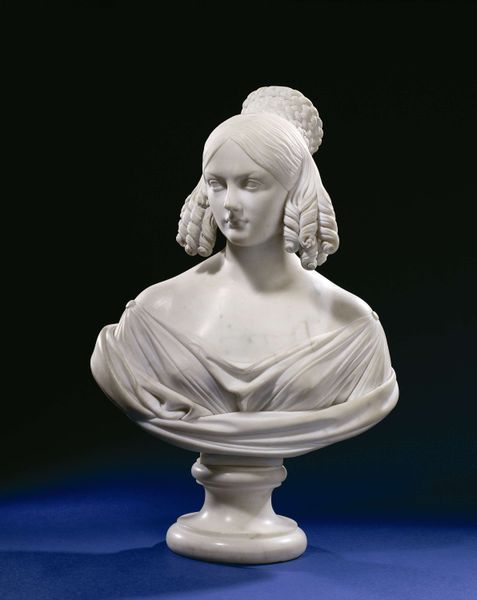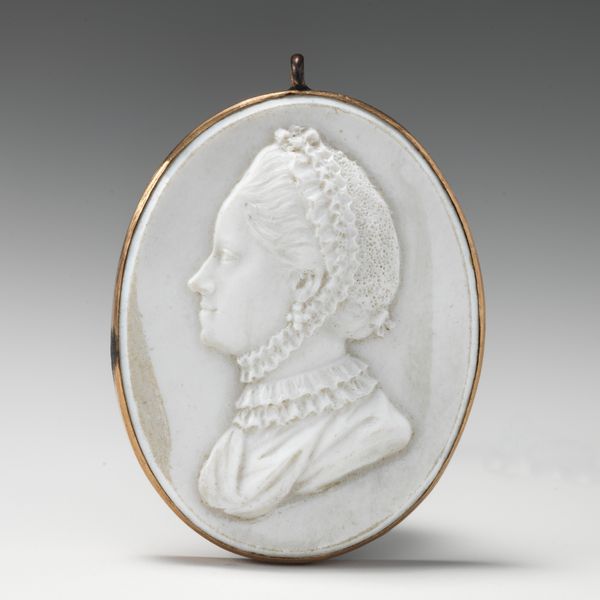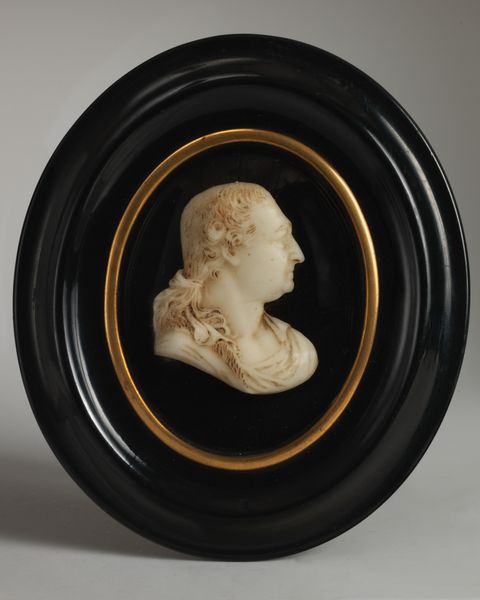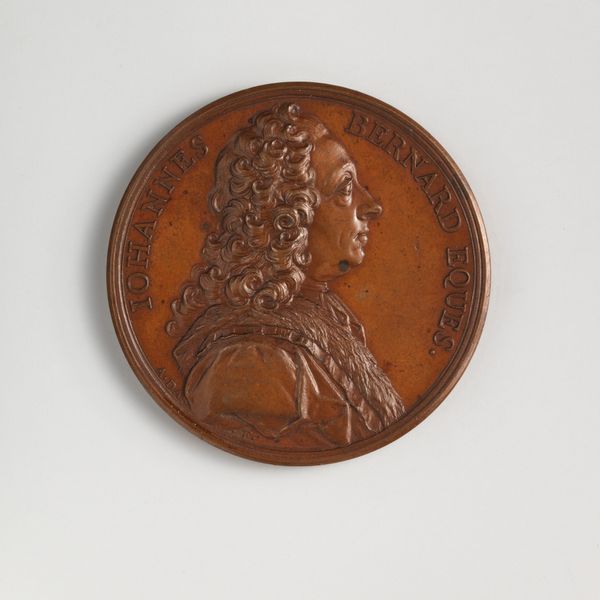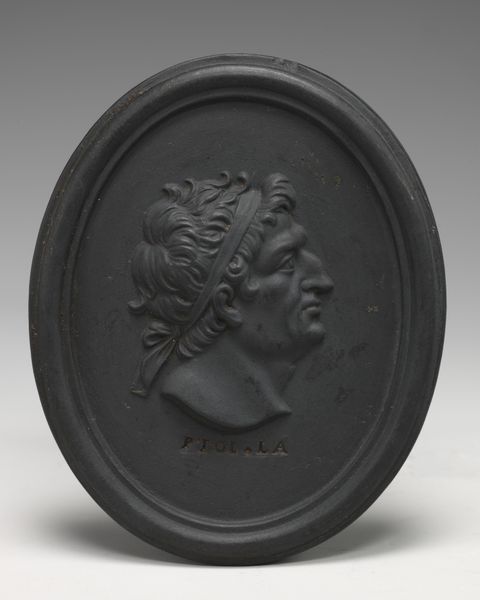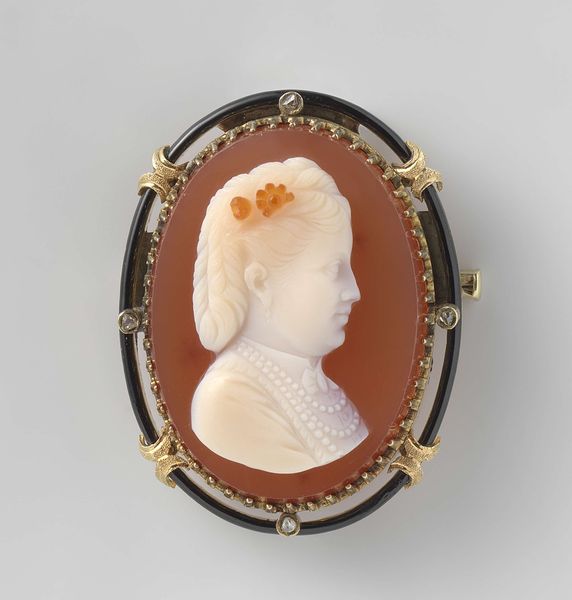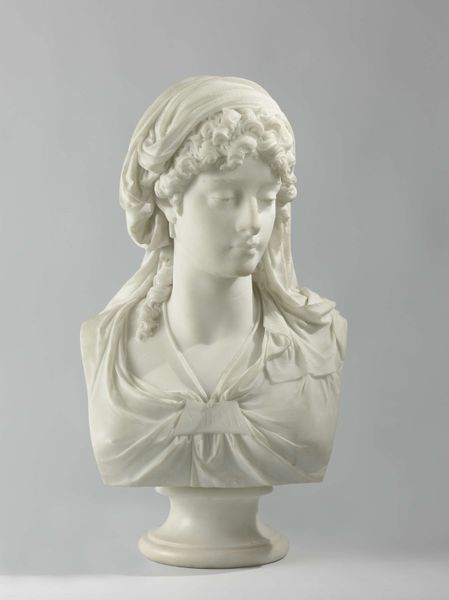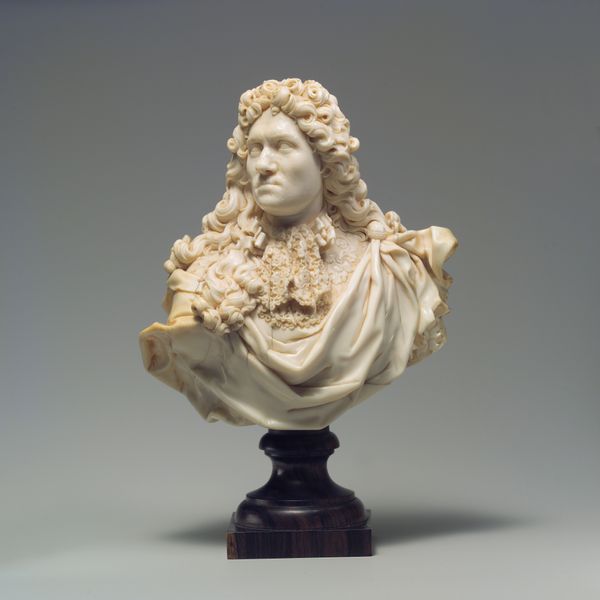
Jugate busts of Czarevitch Paul and Maria Feodorovna of Russia 1791
0:00
0:00
glass, sculpture
#
3d sculpting
#
circular oval feature
#
egg art
#
3d printed part
#
round design
#
curved arc
#
glass
#
3d shape
#
stoneware
#
sculpture
#
ceramic
#
men
#
round circular shape
#
decorative-art
#
profile
Dimensions: Overall: 2 11/16 x 2 3/16 x 7/16 in. (6.8 x 5.5 x 1.1 cm); 68 x 55.4 x 11.1 mm
Copyright: Public Domain
Editor: Here we have a glass paste sculpture from 1791, “Jugate busts of Czarevitch Paul and Maria Feodorovna of Russia,” by James Tassie. It’s so smooth! What’s immediately striking to me is how something seemingly mass-producible—glass, a mold—is used here to commemorate these individuals. What do you make of this combination of material and subject? Curator: I see a fascinating tension. Glass paste, easily replicated, is being used to elevate these figures. Tassie wasn't simply producing art; he was running a business, manufacturing replicas and cameos for a growing market eager for accessible versions of high art. The “high art” of sculpture, in this instance, serves political propaganda. Editor: Propaganda, you say? Curator: Consider the time. It is just after the Enlightenment, yet royalty continues to enjoy elevated status. Creating a cameo, itself something from the Classical tradition, it promotes these figures’ legitimacy. It is both art, and material promoting political legitimacy and loyalty through affordable material culture. Does the material change your impression of it? Editor: Definitely. Knowing the historical context and Tassie’s means of production really challenges this read as "pure" art. It shifts my thinking toward consumption and distribution. Curator: Precisely. By understanding the glassmaking process and Tassie's commercial enterprise, we can peel back the layers of meaning embedded within this object and see how materials and making intersect with political and social power. Editor: It's interesting how what seems like a simple choice of material reveals so much about the artist's intentions and the context it was created in. Curator: Exactly, paying attention to these aspects opens doors to new and unexpected ways to interpret it.
Comments
No comments
Be the first to comment and join the conversation on the ultimate creative platform.
